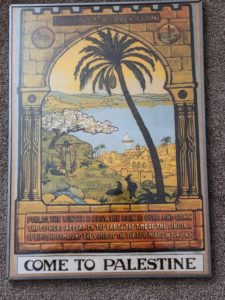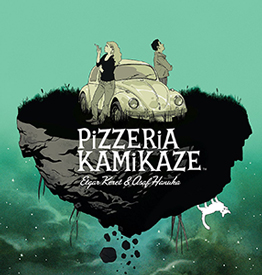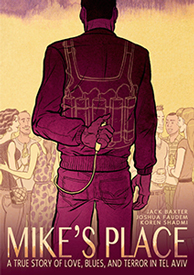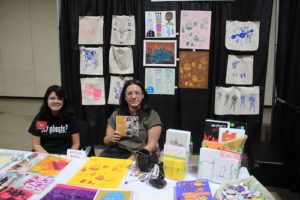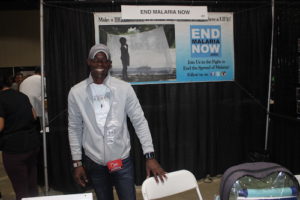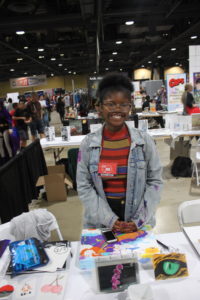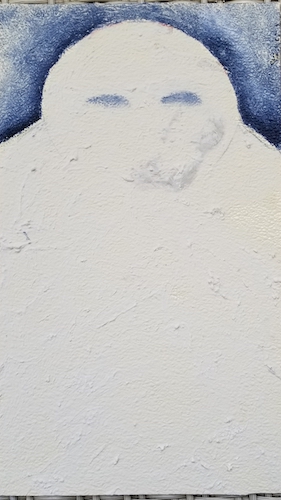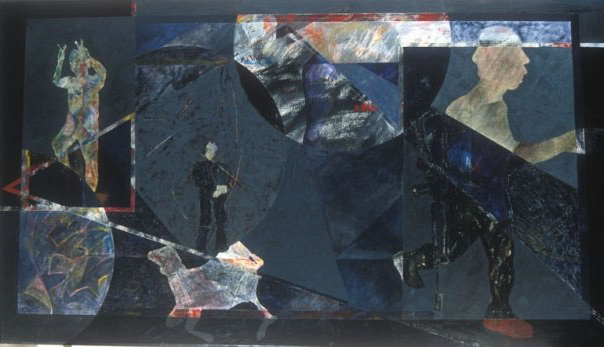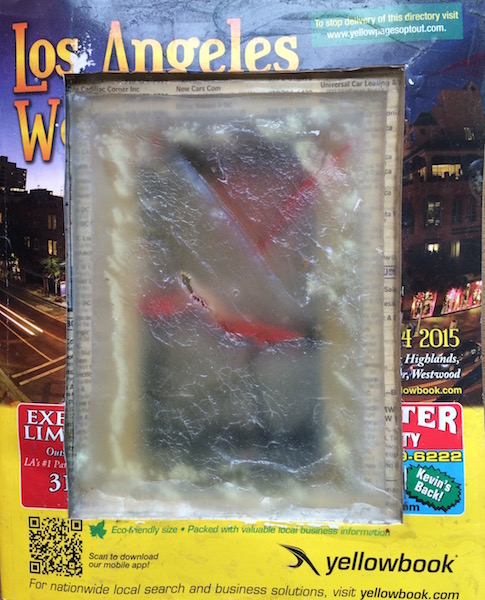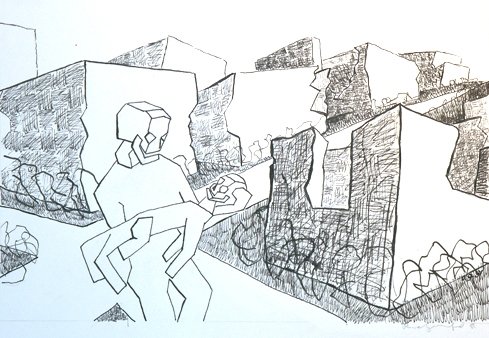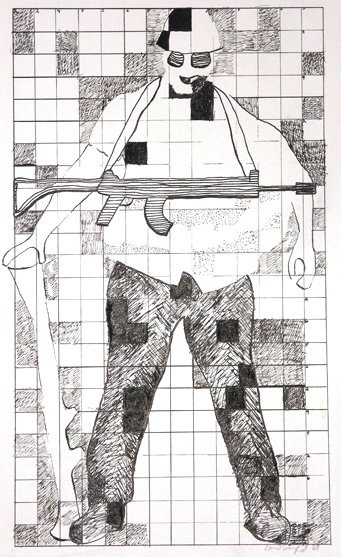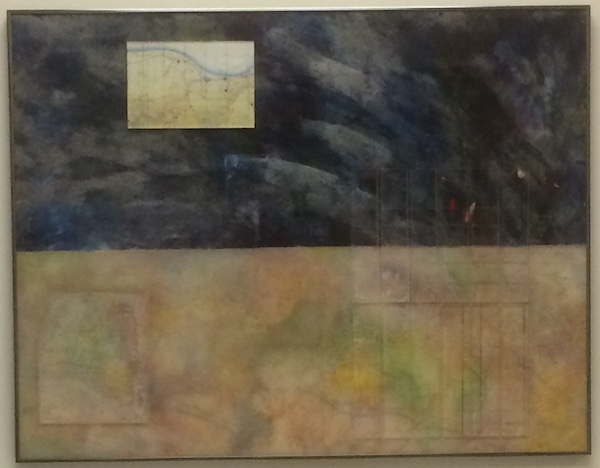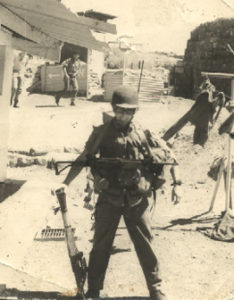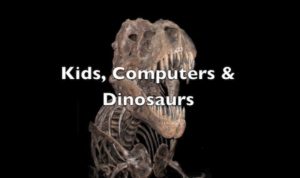Funny how things change. The Israeli right is so adamant about the Palestinians not living in a country called Palestine, while at the same time denying that the country ever existed. Yet, guess what the country was called Palestine, way back when? Yep, you got it. Here is a facsimile of a 1929 poster designed by Zev Raban, artist and one of the founders of the Bezalel Art Academy in Jerusalem. (BTW, it was a gift from my good friend Dr. Annamaria Orla-Bukowska), from the Jewish quarter in Krakow. I love the style. The scene is Tiberias next to the Sea of Galilee.
Once upon a time pre-State of Israel, there was Palestine
Connections, creativity, the stars, myths and the Black Death
My recent work blog about collaborative learning
http://bc-tipd.net/blog/?p=190
My own Christmas/Holiday truce

Mt. Avital in the snow. https://commons.wikimedia.org/wiki/Category:Mount_Avital#/media/File:SnowGolan_(6).JPG
In the winter of ’75-’76, while serving in an infantry brigade in the Israeli army, I was stationed on Mt. Avital, a mountain on the Golan Heights. Well, actually, it was one of the several extinct volcanoes that dot the heights along the eastern side, next to the close to abandoned Syrian city of Quneitra. We were tasked with guarding the radar and communications facilities at the top, and patrolling the border below 2 times a day, and lived in stone bunkers. The weather was cold, windy, and at that time, had been snowing for three days and nights. On the third night, it stopped snowing, and my squad wandered out of our bunker to a sight of magic and beauty. As far as we could see, the Heights were covered with a blanked of snow. All of the mine-fields, barbed-wire, military bunkers, outposts, and bases on both sides of the border were covered by the pure, white cover of snow. There were no clouds, but rather a sky filled with the infinite diamond points of stars, punctuated by the silver brightness of a full moon that blinded anyone curious enough to look directly at it. Born and raised in a snowless Los Angeles, I was in awe of the views. Being a soldier, I was in awe by the fact that within three days, all signs of war were hidden right in the open.
Soon, all of the soldiers not on duty in the bunkers were out and about, walking around, looking and enjoying this moment of magic. The stars and moon lit up the fields of war like daylight- we could see everything, and knew that the Syrians were doing the same. Everything on top of the snow was visible, as far as the eye could see. We could not sneak up on them, and they could not sneak up on us (after all, we were up high and looking down). We were too far from being able to get together to play soccer and exchange gifts, but we all knew that an unofficial truce was in effect. Everyone on our mountain, and in our fields of vision was awake and enjoying the weather-induced truce, something that never happened before (we patrolled in the rain, mud, sleet and every other act of the weather).
Well, nearly everyone was enjoying the peace. After a while, the mountain commander came out of his bunker, saw us and started to scream (no surprise there, since he only knew how to scream) at us, to return to our posts , return to duty (odd, since no one on duty had actually left their posts), and go inside. So ended our unofficial truce. But the magic and peace of the moment did not return to the bunker and has remained in me ever since, and I do believe it has stayed with everyone that was there.
Peace to us all.
View from the blog, looking at a sad couple of weeks
To say that the past two weeks have been an emotional roller-coaster is a bit of an understatement as I watched and listened to a litany of people (mostly old, white men) in their heads-down rush to strangle, or at least close down democracy in this country. The rushed circus surrounding the kavanaugh nomination was a circus of the damned. People like McConnell no longer attempted to hide their contempt for the rule of law, or from their own hypocritical, Machiavellian sensibilities and actions. No matter that they run over laws meant to protect the citizens of this country, or the reputation of Dr. Blasey, a serious and honest scholar in order to place a man who is clearly not suitable for the highest court in the land.
And then there are the people who supported this circus of the damned, based on their own feelings and stories told to them by the president and his supporters, exhibiting a serious lack of critical thinking, and empathy (among other things). Sigh.
All of this brings me back to a few basic comments about good education. The first is that education is not bean counting, not one size fits all and all students learn alike. These examples are clearly not a new and radical idea, and have been around and have been observed, studied and written about by social scientists such as Howard Gardner, Seymour Papert, Sherry Turkle, and ideas such as the Reggio Emilia Approach (The Hundred Languages of Children), and others. Basically, these scholars and ideas represent an idea that strives to address the needs of learners who think and process information according to their own unique strengths. There are people who understand the world through the mind of an engineer, or mathematician, though strict, often linear logic and rationale, while others understand the world through the creative arts. One does not cancel the other in terms of critical importance and needs, as all disciplines are needed in this world, and there a polyglots of disciplines. For example Brian May of Queen is also an astrophysicist. And there are those who understand the world in visual terms, through painting, or even comics and graphic novels.
One of the most important issues challenging educators then is to develop curriculum and tools to address as many types of learners as possible (often through collaborative learning), to help individuals gain the important skills needed or contemporary society- observation, critical thinking, and empathy, so that hopefully, we can move away from the medieval thinking that celebrates people like kavanaugh, trump, devos over real thinkers who are able to address issues with knowledge, understanding and empathy,
Comics against Hitler
How Jewish comic book artists led the fight to break the silence on the Holocaust https://www.haaretz.com/israel-news/.premium-how-jewish-comic-book-artists-led-the-fight-to-show-the-holocaust-1.6462797
Graphic literature and the other side of short attention spans.
This week I had a conversation with a woman sitting next to me at a cafe here who noticed that I was reading The other side of the wall, an engaging graphic memoir by Simon Schwartz. Schwartz tells his personal story about the trials and tribulations of escaping from East Berlin to the West, before the fall of the Berlin Wall. Although written for HS students, it is engaging enough for college and post college, as supplementary reading.
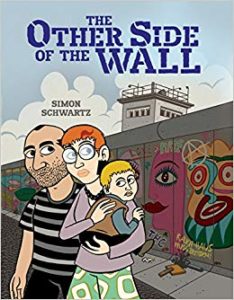 She and I discussed the Berlin Wall, this particular story, and of course, comics and graphic novels. As I told her about my dissertation, she looked up an me and said, “Of course those books are for people with a limited attention span.” A limited attention span.
She and I discussed the Berlin Wall, this particular story, and of course, comics and graphic novels. As I told her about my dissertation, she looked up an me and said, “Of course those books are for people with a limited attention span.” A limited attention span.
In all honesty, I needed to run to an appointment, so I was unable to continuing our chat, as well as educating her about graphic literature. I am not even sure where to begin with this. Perhaps with Howard Gardner’s books about multiple intelligence, and that not everyone learns or processes information the same way. Some people are very numbers-oriented, so some are text-hounds, others are visual thinkers, who may not have appropriate skills for dense readings and books. This type of thinker may excel at a number of other disciplines, but not reading. Since I am a strong believer in the notion that learning and education are not tasks for bean-counters, but are very, very messy endeavors that require educators to translate and convert ideas about specific disciplines into others. For example (and I mentioned before), not every learner can or will 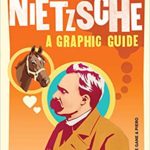 read the philosophers such as Nietzsche, or others, but that can all benefit intellectually and practically from being exposed to the great thinkers in ways that address their natural way of learning, such as through graphic literature for visual thinkers. such as Nietzsche, a graphic guide by Laurence Gane, or any of the other 15 books in the collection that cover topics such as Freud, Psychology , Post Modernism, Logic, Critical Theory, Philosophy, Marxism, Capitalism, Quantum Theory, and Chaos. One need not be a student of philosophy (or even a formal student) to be able to learn and enjoy from these books, that are not for the short of attention.
read the philosophers such as Nietzsche, or others, but that can all benefit intellectually and practically from being exposed to the great thinkers in ways that address their natural way of learning, such as through graphic literature for visual thinkers. such as Nietzsche, a graphic guide by Laurence Gane, or any of the other 15 books in the collection that cover topics such as Freud, Psychology , Post Modernism, Logic, Critical Theory, Philosophy, Marxism, Capitalism, Quantum Theory, and Chaos. One need not be a student of philosophy (or even a formal student) to be able to learn and enjoy from these books, that are not for the short of attention.
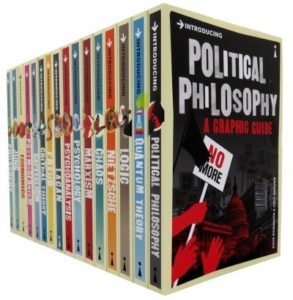 Titles in graphic literature address philosophy, history, personal memoirs about war, science, immigration and refugees, and many more critical topics that are needed for an understanding of where and when we live. For those who say that comics are either for short attention spans, or for simpletons, or any other excuse, I say that one of the causes of these ideas is from the change to core curriculum, or standardized testing and learning. There is nothing standard about teaching- it is an art with lots of different tools, and processes that educators learn, adapt and use in their own work as educators- teaching to the different kinds of learners in different kinds of disciplines. If a student is perceived to have a short attentions span, then the teachers need to find a way to reach out to them, to bring them into the conversation, with a text book, a song, or a graphic novel, among other things. The short attenti0n span is then made longer as students find their way, their language to understand the discipline being taught.
Titles in graphic literature address philosophy, history, personal memoirs about war, science, immigration and refugees, and many more critical topics that are needed for an understanding of where and when we live. For those who say that comics are either for short attention spans, or for simpletons, or any other excuse, I say that one of the causes of these ideas is from the change to core curriculum, or standardized testing and learning. There is nothing standard about teaching- it is an art with lots of different tools, and processes that educators learn, adapt and use in their own work as educators- teaching to the different kinds of learners in different kinds of disciplines. If a student is perceived to have a short attentions span, then the teachers need to find a way to reach out to them, to bring them into the conversation, with a text book, a song, or a graphic novel, among other things. The short attenti0n span is then made longer as students find their way, their language to understand the discipline being taught.
The search for super heroes at LB ComicCon
 As I recently walked in to Long Beach Comic Con, I contemplated my tradition of identifying and searching for one specific thing. When I saw my first SpiderMan, I knew that I wanted to look for super heroes. Not the super heroes of our collective imaginations, but the real ones here, the writers and artists who create stories and books about real life, and culture- the things that can make society a better place for everyone. These are stories about a broad definition of social justice- personal memoirs about big issues such as war, hate, racism, sexism, the environment, health, usually told in first person, as a memoir or personal narrative. Or genres such as graphic journalism, or medicine, or teaching language to improve multi-cultural communication. And even though the majority of the conference was about heroes of out imagination, I found some real-life heroes who write, draw, publish, distribute about real issues, making them real-life super heroes. Below are just a few of the people that I met. I tried to get everyone’s name, but sadly, my main notes were blown away by the wind (long story), so I did the best that I could. Below are several of the people and organization that I discovered. Also, please contact me if you see your image without identification so that I can fix it.
As I recently walked in to Long Beach Comic Con, I contemplated my tradition of identifying and searching for one specific thing. When I saw my first SpiderMan, I knew that I wanted to look for super heroes. Not the super heroes of our collective imaginations, but the real ones here, the writers and artists who create stories and books about real life, and culture- the things that can make society a better place for everyone. These are stories about a broad definition of social justice- personal memoirs about big issues such as war, hate, racism, sexism, the environment, health, usually told in first person, as a memoir or personal narrative. Or genres such as graphic journalism, or medicine, or teaching language to improve multi-cultural communication. And even though the majority of the conference was about heroes of out imagination, I found some real-life heroes who write, draw, publish, distribute about real issues, making them real-life super heroes. Below are just a few of the people that I met. I tried to get everyone’s name, but sadly, my main notes were blown away by the wind (long story), so I did the best that I could. Below are several of the people and organization that I discovered. Also, please contact me if you see your image without identification so that I can fix it.
The Exceptional Children’s Foundation provides art classes for children and adults with intellectual and developmental disabilities so that they can explore and develop their creativity and self expression, which helps these individuals gain self-confidence to communicate, work and interact with life and society. The art classes are taught by professional artists in several centers around Los Angeles, with a gallery Downtown. And, they are starting to teach the students how to make their own comics!
End Malaria Now is doing critical work in Africa to eliminate this terrible disease. The director is producer Richard Harding (Hotel Rwanda) is a native of Sierra Leone and has personally seen the devastation of this disease, and their mission statement states “End Malaria Now’s mission is to raise consciousness and funding to fight and eradicate malaria, the largest known killer of children under the age of 5 in Africa. An ounce of prevention is worth a pound of cure, as they say – it is by far easier to stop something from happening in the first place than to repair the damage after it happens. Malaria IS a preventable disease. By providing the tools and information necessary to ensure that they are used properly, we CAN and we WILL save lives, one bed net at a time.”
An important element of EMN’s work is in education for children in African countries that are hard hit by malaria, and part of the way that they do this by distributing backpacks with school supplies, as well as posters about children (and their families) need to do to protect themselves, as well as their local environments, and they too are starting to use comic books to accomplish this.
Prism Comics is a “non-profit, all-volunteer organization supporting lesbian, gay, bisexual, transgender, questioning, intersex, asexual and LGBTQIA-friendly comic books, comics professionals, readers and educators. In 2003 a small group of comics fans and professionals gathered together to form Prism Comics – an organization and website where LGBTQ and LGBTQ-friendly comics creators could network and share their comics and readers could find works that spoke directly to their experiences and lives.
There was a whole section dedicated to students from the Da Vinci Design High school and their amazing teacher, Ralph Villalobos.
Da Vinci is brilliant group of schools and programs that reaches out to the natural ways that students learn. I’ve visited the schools and have not seen anything less than
100% commitment to learning and the palpable sense of excitement that goes with it. Mr. Villalobos taps into this, teaching his students about graphic narrative, and the formal elements of a comic book, and guides the students through the process of them making their own books. It is very cool!

L to R: Writers, artists, and musicians Patrick Martinez, Peter Mellini, Andres Cervant, the organizers of East LA C.A.P.E
East LA C.A.P.E (Comic Book Art & Pop Culture Expo) is ” …the premier comic book show in East LA. Formerly The East LA Comic Con, The East LA CAPE is a community based show that features local and independent artist and creators as well as a love of mainstream pop culture.” C.A.P.E 2019 promises to be fun, entertaining and educational, especially for exploring the work of and about Chicano graphic artists and story tellers!
I could not resist this- Dan Taylor, author of Donald of the Dead is one of the first (if not only) comics that tackles the issue of trump head on, with his book Donald of the Dead, which poses the question, “What would happen if donald and his followers were all actually zombies?”. It is irreverent, graphicly gory, and very funny, in a sick and twisted kind of way. Dan is a nice guy, and signed my book (which came with a bumper sticker and selection of donald of the dead trading cards!
Alex Dandino is author and his wife Andrea is the muse for the book Stalkings, a story about the women who acted as spies and secret agents for the Allies during World War II. This is as important story as those of the WACS. WAVES, and Rosies (as in Rosie the Riveter), women who had critical roles in the American war machine, replacing men who were fighting on the land, air and sea. The jobs that these women did were dangerous, and important and their stories need to be told.
In Out of Order, artist Seol Lee, and her husband Mike Ahn tell a very intense and personal story about a couple dealing with the serious mental condition of the husband, which is based on their own lives. Comics and graphic novels are an excellent way to educate the public about the pain, challenges and successes of people living with a variety of conditions, that surly will help people to not be afraid, as well as learn to be more empathic and supportive of the for members of that community.
Que Lico is a friendly and delightful artist and writer who works in two genres- A PG one, with smiling faeries, and other characters, and an X rated genre with the same characters, but in more adult-themed escapades. Her work is generally happy, and the x-rated is sex-positive, celebrating sexuality with joy, rather than shame.
This is a cool poster of the new catch phrase of Supergirl, that really highlights the new and needed sensibility of contemporary comics.
 And of course, it would not be a Comic Con without Cos Play and costumes, and here are some of my favorites!
And of course, it would not be a Comic Con without Cos Play and costumes, and here are some of my favorites!
As we say a fond farewell to the 2018 Long Beach Comic Con, we come across these 4 bad-ass fairy tale heroines, as they continue their exploration of all publications graphic and fun!
So you want to be an artist?
It has been a rough week so treatises or lectures this week, just some of my art work. Oh yes, besides being an educator, technologist and innovator, I am an artist. Actually, I started out as an artist. Well, I still am. It’s funny, but the evening before I was discharged from the IDF, my base commander called me to his office for an exit interview. This was not usually the case with soldiers about to leave. But as I was one of 6 Americans on the base, and the only one teaching 81 mm mortars, he was curious. After some chit-chat, he asked what I was going to do, and I replied, “go back home and study art”, which is what I did, and do (although not as much as I used to, or want to. But I am still being creative!). So here are a few selecti0ns from the past 3.5 decades. I’ll be adding more details later and in the mean time, I hope that you enjoy!
The long and winding blog
Today I was downtown and bumped into a friend who is an adjunct in education at USC. We had not seen each other in awhile, so after some catch-up, we returned to our ongoing dialogue about education. It seems that over the summer, he has been consulting for the LAUSD. One of the areas of his work is to help teachers to recognize the many practical applications for the classes and theories that the students are exposed to and try to learn. We agreed that for lots of reasons, teachers do not always get the opportunity to do this, and also for many reasons, students do not always understand why they need to learn a particular subject. We both agreed that one of the main reasons that hinder students is the lack of context of the material- it just sort of stands out there with no real, and personal meaning. Creative teachers understand this and try to present content in a contextual setting that helps engage students in learning and understanding. Sadly, there are many creative teachers who cannot really do this because of core curriculum guidelines, standardized curriculum and testing, having a lot of students with no assistance in their classrooms, as well as other reasons beyond their personal control. But these issues are for another time, and another rant.
After we parted, I continued on bus and bike on my journey home, and continued to reflect on the the issues of providing context in the classroom, theory and practice. One of the ideas that always comes to mind when I contemplate these three issues is Gardner’s work on multiple intelligence. People learn different things in different ways. Some speak and understand the language of math, others history or language, others art or music, or sports or any of the other types of intelligences identified by Gardner. This does not mean that because a person understands one or more things in a natural, relatively easy way, while struggling with others that they lack the ability to learn. It just means that they speak certain “languages” naturally, while others, well not so. For example, I am a natural liberal arts kind of guy- history, literature, art, philosophy and things like that. Some sciences too. But math was the bane of my existence throughout school. As far as I was concerned, my teachers all spoke Martian (with the exception of my 10th grade algebra teacher who knew how to teach to students like me. Math was all theory for me, which was difficult for me to understand and contextualize. But things happened, I was exposed to practical math, and I began to understand.
The first time that I realized that I could understand math was after I was drafted into the Israeli army (another long story). I was sent to an infantry unit, where I walked and walked and learned distance in kilometer (lots of kilometers), which I learned to convert into feet and miles (lots of miles). Learning range and distance is a critical skill, especially after I was assigned to 81mm mortars. I was exposed to range, distance, ballistics, arcs, and more, and in a practical setting. I learned and understood so well, that I became a trainer to both regular soldiers as well as officers, teaching both theory (including exercises using more complex algebra, geometry and even a bit of trig). Later, after returning to the US, I worked as a house framer, where the need to understand math was again critical. But I learned. It is easy to see the difference between school and military and carpentry. In school, I was exposed only to theory, with no context. In the military and carpentry, I was exposed to the practical application of theory, or the context. It made sense. The same thing happened when I was learning how to read topographical maps- the theory made little sense, but in the field (especially walking lots and lots of miles), it made sense.
The questions then arises about how to contextualize content as much as possible in classrooms that often have a strict set of one-size-fits-all learning guidelines? Two of the methods that provide both an answer and a process are Project-based learning and constructivist learning. And both can provide different contexts to address the different needs and abilities of all of the students.
One example that came to mind today was a project that I put together when my son was in primary school and I was working as an instructional technology analyst at Loyola Marymount University. I learned from my son’s teacher that they besides having old, and out of date computers, there was no time to really present the dinosaur module in class because of time constraints caused by the administrative need to prepare students for standard testing, and the lack of teachers’ assistants in the classroom. I started a conversation with the classroom teacher, my supervisor and some of my colleagues to develop a solution, which we did. Once a week for about 6 weeks, three of my colleagues and I would gather 5 or 6 laptops, go to the school and lead a project-based learning module about dinosaurs and computers.
We approached the students and told them they each of them was an expert on dinosaurs, and that they were about to research and present on their favorite dinosaur questions. We introduced them to basic research on the web (guiding them to age-appropriate web sites), then showed them how to capture images, and place images and text in a PowerPoint presentation. They chose the questions, images and wrote the text. We also provided a video camera and instructions on how to use it (most had already learned at home) so that they could video interview each other for their assignments. Everything was contextualized- they learned what they were interested in, helped out their friends, learned how to make a presentation, all based on dinosaurs.
At one point, the district computer guy, who went around teaching at different schools, heard about and got excited about the project, so he came to one of the sessions to teach the kids computers. Sadly, he did not have a good time or do a good job. He approached this lesson by focusing only on the computers, without any meaning or context. The kids were not interested, did not pay attention, and drove him a bit mad. He later complained to me about the lack of discipline, somethings that my colleagues and I did not experience. There were several actions and activities that he could have done that would have better engaged the students in learning computers and dinosaurs, the main one being to contextualize the content, and make it personal. In other words, to do what good teachers always strive to do.
By the way, the project was a success. I edited all of their presentations together, made a movie so that each participant would have a copy of their work, and the teachers, principal, parents and especially the students all love it (and the students had the extra benefit by learning about dinosaurs and computers.
(And I did not even mention graphic literature, although there are lots of parallels. But that is for another blog…)
___________________________________
Well, here I am late again. I really am trying to post a blog every Sunday night, which I usually do. But the digital dog at my virtual homework, or in this case, there was a glitch in my blog’s host, and I could not access the admin page. All is well now, so stay tuned my faithful followers to next Sunday’s blog! And thank you for reading!

